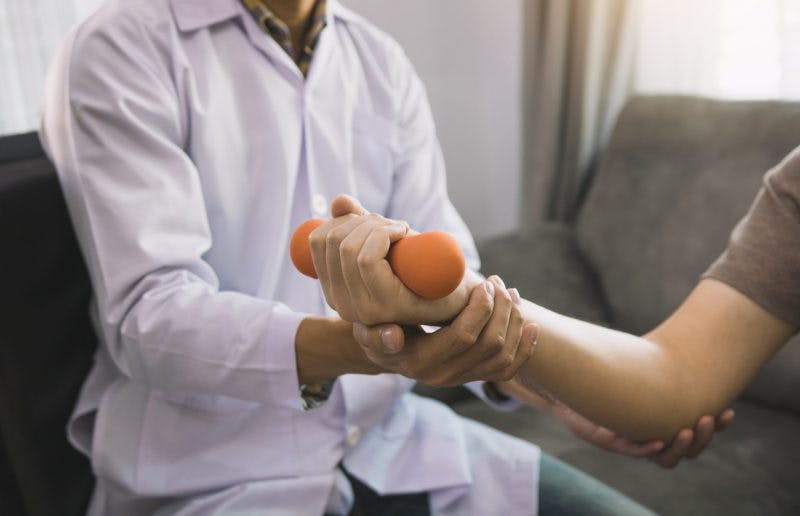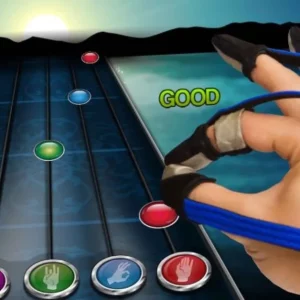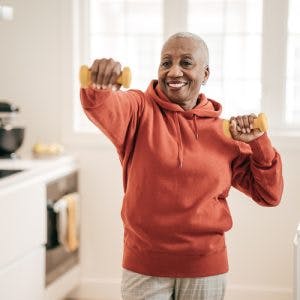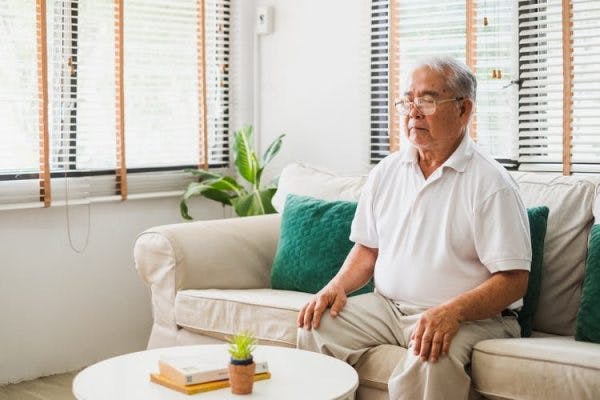Muscle atrophy after stroke refers to a decrease in muscle mass, which can lead to reduced strength and increased risk of injury. It is common for many stroke survivors. This is especially true after long hospital stays or for those with greater severity of stroke secondary effects.
If unaddressed, muscle atrophy after stroke can bring about additional complications and can reduce a survivor’s independence. Fortunately, there is hope for recovery through a dedicated rehabilitation program.
In this article, we will explain four major causes of muscle atrophy after stroke and the impacts atrophy can have on recovery. Additionally, we will review different treatments to help reverse the effects of muscle atrophy.
Causes of Muscle Atrophy After Stroke
Muscle atrophy is the deterioration of muscle tissue due to extended periods of inactivity or immobility. Basically, when a muscle is not activate or exercises regularly, the muscle fibers themselves begin to shrink. With time, the muscle becomes progressively smaller and weaker. This is considered atrophy.
For example, someone who wears a cast on their arm for a few weeks will lose muscle mass in that arm due to the inactivity of the muscle. This same concept also applies after stroke.
There are multiple reasons why you might experience muscle atrophy after stroke. Four of the most common reasons include:
- Hemiplegia or hemiparesis. After stroke, many survivors experience a disruption of communication between the brain and muscles. This often presents as hemiplegia or hemiparesis, which is paralysis or weakness of one half of the body. When muscles are not firing often or working correctly, a gradual loss in muscle mass and strength can result.
- Prolonged hospitalization. If a stroke was severe, a survivor may need to remain in the hospital for several weeks. Prolonged inactivity during acute hospital stays can cause muscles to deteriorate. This is why it is important to participate in therapy as early as it is offered to you in the hospital.
- Malnutrition. A stroke can cause difficulty with chewing and swallowing food, known as dysphagia. This can lead to malnutrition which, if combined with inactivity, can speed up muscle atrophy.
- Learned nonuse. Finally, survivors often find ways to compensate for impaired movement after stroke or can neglect a limb entirely. For example, if your right arm is weak, you may start to rely on your left arm for most tasks. This can lead to learned nonuse, a condition where your brain loses its awareness of the affected limb. Depending on the type of stroke, a survivor may also experience complete left-side neglect. This nonuse contributes to muscle atrophy after stroke.
As you can see, several different factors can lead to muscle loss. In many cases, these factors do not take place singularly. Rather, many survivors experience a combination of factors that can exacerbate muscle atrophy.
Therefore, to reverse muscle atrophy you will need to address these underlying causes. The next section will cover different techniques to help you prevent and even reverse muscle loss!
Preventing and Treating Muscle Atrophy
Muscle atrophy often creates a vicious cycle, and the consequences can be severe. The more your muscle mass deteriorates, the less strength you have to move your muscles. Concurrently, the less you move your muscles, the more your muscles will atrophy.
This negative cycle is the reason it is so important to take measures to prevent muscle atrophy as soon as possible. Even if your muscle mass has already decreased, these methods can help you reverse atrophy or prevent it from worsening.
Your therapy team will help you create a rehab plan that is best for your unique symptoms and abilities. This plan will likely consist of different techniques and therapies, including the ones described below. To help you get started, the following are a few of the best ways to prevent and treat muscle atrophy after stroke:
1. Treat Hemiplegia with Passive Exercises
If you are affected by hemiplegia (paralysis on one side of the body), it is crucial for you to address this immediately. The longer you do not move your affected side, the more muscle mass you will lose. Additionally, immobility can lead to further complications like muscle and joint contractures.
Fortunately, even if you can’t move independently right now, there are ways to lessen and even reverse the effects of stroke paralysis. You can start with passive exercises, which are performed by a therapist who moves your affected limbs for you. Additionally, you can perform passive exercises yourself by using the opposite, unaffected limb to move the affected one.
Even though passive exercises do not involve active muscle use, this still stimulates your brain and activates a process known as neuroplasticity. Neuroplasticity refers to the brain’s ability to heal and rewire neural pathways. This allows undamaged portions of the brain to take over functions from areas of damaged tissue.
Neuroplasticity is activated even when exercises are passive. Therefore, the more you passively move your arms or legs, the more you will stimulate your brain and form new neural pathways between your brain and muscles. Eventually, you can increase active muscle participation and you may even regain movement.
2. Strengthen Muscles with Active Exercises
When you regain enough movement in your affected muscles, you can start practicing active stroke rehab exercises. The difference between active vs. passive exercise is that active exercise is performed with voluntary muscle contractions. This means that your muscles are performing the exercise independently.
The more you practice, the more you will reinforce the neural pathways that help you move. Eventually, your strength and control over your muscles can increase, improving your efficiency with daily tasks.
You can start by simply moving your affected arm or leg through the exercise without resistance. As your abilities improve, you should progress to more challenging activities, such as weight-bearing exercises or exercises with added resistance.
This progressive loading will stimulate muscle growth and can help reverse atrophy after stroke. Additionally, your therapist might incorporate a modality like electrical stimulation into your active or passive exercises to help encourage muscle contraction.
It is important to note that regaining muscle strength and control will require a high number of repetitions. For example, animal studies have shown that it takes about 400 to 600 repetitions per day of challenging functional tasks to trigger neuroplasticity and recover movement.
This can be hard to accomplish on your own, but many stroke patients find that rehab tools such as Flint Rehab’s FitMi home therapy motivate them to complete more repetitions. In fact, the average patient accomplishes about 23 times more repetitions with FitMi than with traditional therapy.
Work closely with your therapy team to establish an exercise routine that you can be consistent with. Staying motivated and consistent will help increase your strength and reverse muscle atrophy after stroke.
3. Prevent Malnutrition with Speech Therapy Exercises
Treating conditions like dysphagia after stroke is vital for recovery. By improving their ability to swallow, a survivor can help prevent malnutrition and reduce muscle atrophy. One excellent way to improve swallowing is through speech therapy exercises.
Like other stroke exercises, speech therapy activities harness the power of your brain’s neuroplasticity. This can help you regain control of your swallowing and chewing muscles. Additionally, a speech therapist (also called a speech-language pathologist) can provide tips and tricks to promote safe eating. This reduces the risk of further illness, such as aspiration pneumonia.
If you can treat your dysphagia early on in your recovery, you can help prevent malnutrition. By improving your ability to eat, you can give your body the nutrition it needs to make gains in recovery. Also, it is important to focus on eating healthy foods to boost stroke recovery. This in turn will help slow muscle atrophy and allow you to see faster gains in function.
Check out the CT Cognitive and Speech Therapy app.
Reversing Muscle Atrophy After Stroke
Muscle atrophy occurs when muscles decrease in mass and strength due to factors such as inactivity or poor nutrition. Unfortunately, this is common after stroke, especially for those affected by hemiparesis or hemiplegia. Additionally, a lengthy hospital stay can lead to increased muscle loss.
This triggers a vicious cycle in which muscles weaken and become further neglected, leading to even greater atrophy. However, muscle atrophy after stroke can be prevented and even reversed through a dedicated rehabilitation program.
By performing rehab exercises (both passive and active), you can engage neuroplasticity and help encourage muscle activation. With time and repetition, you can help reverse muscle atrophy and see improvements in your strength, function, and overall independence.










